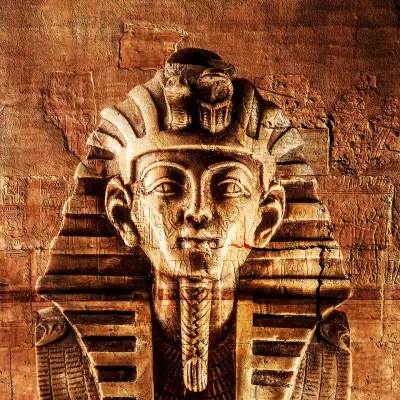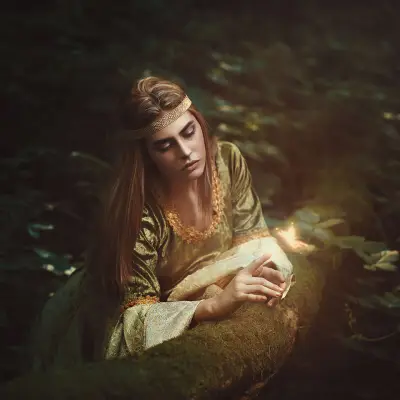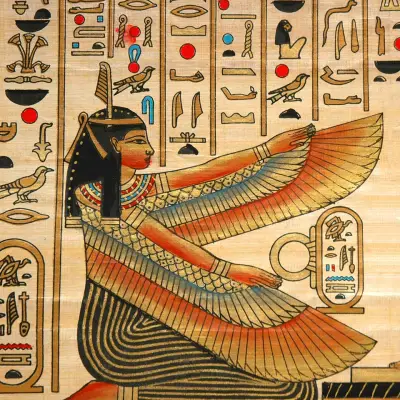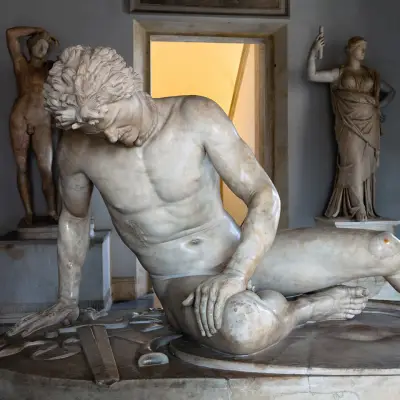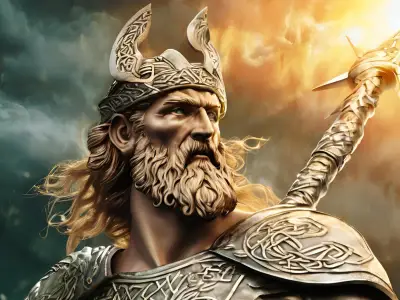If you’ve ever been curious about the eerie, restless spirits that stalk the sagas of Norse mythology, you’ve likely come across the word draugr. These undead beings are neither entirely dead nor truly alive, stirring a particular kind of fascination.
Whether you’re a mythology enthusiast, a fan of fantasy fiction, or just intrigued by tales of ancient Norse creatures, understanding the draugr opens a window into the darker corners of Norse storytelling. Let’s explore what makes these figures so unique, from their chilling powers to their place in history and symbolism.
Jump to:
- Who Was Draugr in Norse Mythology?
- Draugr's Myths
- The Role of Draugr in Norse Storytelling
- What Powers Did Draugr Possess?
- Symbols Associated with Draugr
- Draugr's Lineage and Connections
- Why Is Draugr Special?
- Draugr in Modern Culture
- Draugr's Worship and Legacy
- Frequently Asked Questions About Draugr
- Study Norse Mythology for £29
Recommended for you!
Best SellersWho Was Draugr in Norse Mythology?
The draugr (pronounced drow-gur, with the "ow" like in "cow") is a type of undead creature in Norse mythology. Unlike modern depictions of zombies, the draugr is far more than just a mindless corpse. These beings are often described as animated dead warriors who guard their burial mounds and treasure hoards, fuelled by greed, vengeance, or unfinished business.
The draugr in Norse mythology speaks of varies depending on the saga, but generally, they were considered a serious threat to the living. They could grow in size, emit a terrible stench, and even shape-shift to confuse or torment their victims. Unlike ghosts or spirits, the draugr had physical bodies—solid and often grotesquely decayed—which made them difficult to destroy.
Draugr's Myths
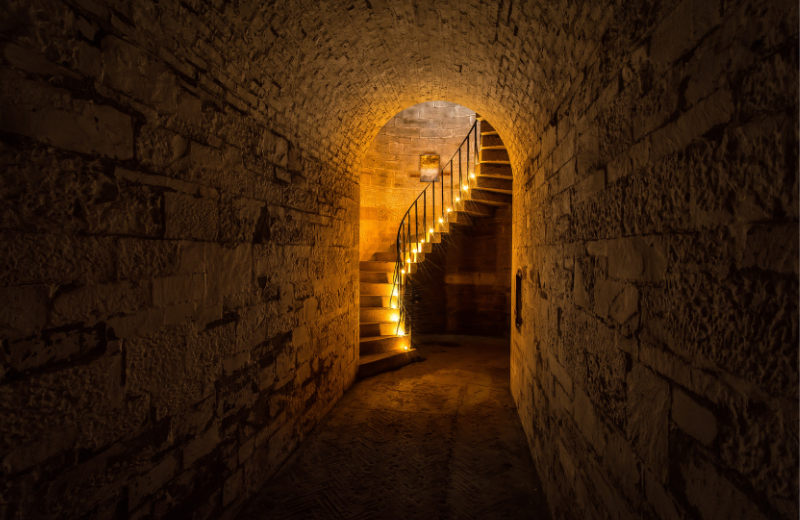
Stories of the draugr appear throughout Norse mythology, each offering a unique glimpse into the fears and values of Viking society. They embodied themes like honour, greed, and the boundary between life and death.
Grettir and the Barrow-Dwelling Draugr
One of the most famous draugr tales appears in the Grettis saga. The hero, Grettir, descends into a burial mound to battle a Draugr named Kárr, who guards both his grave and a valuable treasure.
Kárr is no ordinary foe—he displays terrifying strength and an almost supernatural resistance to harm. After a gruelling fight, Grettir defeats him and retrieves the treasure, but the story highlights the danger of disturbing the dead.
Draugar Haunting the Countryside
Other sagas describe Draugar wandering from their graves to torment the living. These Draugar kill livestock, break into homes, and terrorise entire villages.
In some versions, they carry the stench of death and bring disease wherever they go. Their attacks are relentless and fuelled by emotions like jealousy or anger that they carried into death.
Sea-Dwelling Draugar and Sailors’ Doom
Some myths speak of Draugar who dwell in the sea rather than the land. These undead spirits are said to haunt shipwrecks or lie in wait beneath the waves, pulling sailors to their doom. Known for their eerie cries and ghostly shapes, they were feared by seafarers navigating dangerous northern waters.
These tales reflect the Norse people's deep respect—and fear—of the sea as both a giver and taker of life.
The Role of Draugr in Norse Storytelling
In Norse society, draugr myths served as cautionary tales. They reminded people to respect the dead, bury bodies properly, and lead honourable lives. The fear of becoming a draugr after death wasn’t just about horror—it reflected the deep social and spiritual beliefs of the Norse people.
Those who had been dishonourable, greedy, or malevolent in life were said to have a higher chance of becoming Draugar in death. The stories also suggest that strong emotions like jealousy, rage, or a refusal to let go of the living world could trap a soul in its corpse, creating a draugr. In this way, Draugar stood as eerie reflections of human flaws that linger even after death.
What Powers Did Draugr Possess?
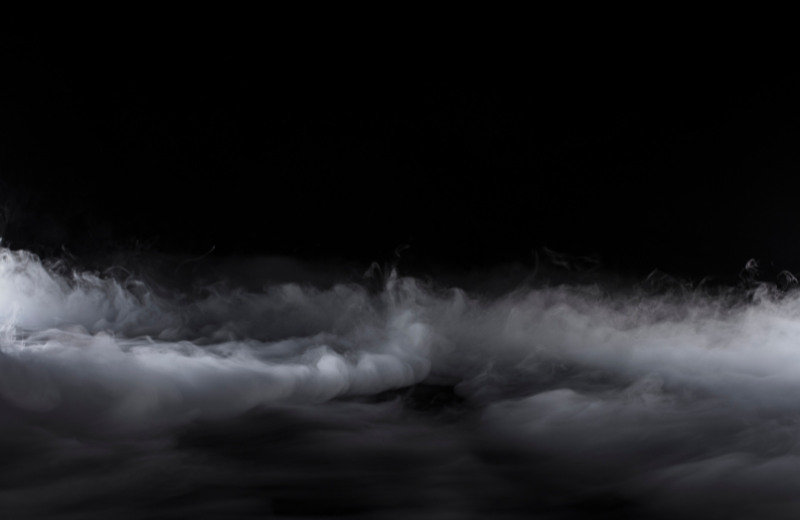
One of the most fascinating things about Draugar is their terrifying range of supernatural powers. According to legend, Draugar could:
- Shape-shift into animals or fog to stalk their victims.
- Increase their size to immense proportions, overpowering any opponent.
- Control the weather, especially to create storms at sea.
- Enter the dreams of the living to torment them.
- Possess great strength, far beyond that of a living man.
- Walk through walls or solid barriers.
Symbols Associated with Draugr
While the draugr itself is a symbol of death, corruption, and restlessness, other Viking symbols in these stories help us understand their role. Burial mounds, swords, and grave goods often feature prominently. The draugr sword, for example, is a term sometimes used to describe a cursed or enchanted weapon found in the tomb of a draugr—powerful, but dangerous to its wielder.
The grave mound is also symbolic. In Norse belief, these mounds were seen as gateways between the worlds of the living and the dead. A disturbed or dishonourable burial could lead to the awakening of a draugr.
The symbolism of the draugr continues to echo the Norse belief in the importance of honour, proper rites, and maintaining a balance between life and death.
Draugr's Lineage and Connections
Draugar don’t form part of a noble bloodline or godly family like many other Norse mythological beings. Instead, they are often connected to warriors, kings, or people of wealth or power. Their transformation into a draugr isn’t based on ancestry, but on how they lived—and how they were buried.
That said, there are spiritual connections between the draugr and other creatures of Norse lore. Some scholars believe draugar share traits with jotnar (giants) due to their size and strength. Others link them to elves or land spirits, based on their attachment to specific burial sites or territories.
Why Is Draugr Special?
The draugr is unique because it straddles the line between physical monster and symbolic warning. Unlike typical ghosts, the draugr is something you can fight, but not without risk. It speaks to the unresolved emotions, failures, and ambitions that can haunt a person long after death.
Draugr in Modern Culture
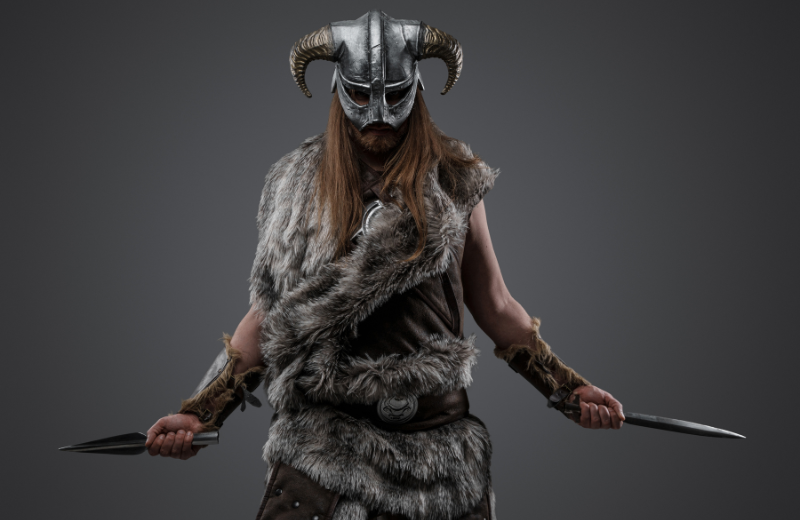
Modern fantasy, gaming, and literature have embraced the concept of the Draugr. If you’ve played games like The Elder Scrolls V: Skyrim, you’ve likely battled Draugar in ancient Nordic ruins. These versions closely resemble their mythological counterparts—decayed warriors, guarding treasures in tombs, and wielding ancient weapons.
Books, films, and TV shows have also picked up the idea of the draugr as a haunting, intelligent undead foe. While often compared to zombies, Draugar are more than that—they are thoughtful, dangerous, and driven by powerful emotions and purpose.
Draugr's Worship and Legacy
Unlike the gods and heroes of Norse mythology, Draugar weren’t worshipped. In fact, the aim was to avoid them entirely. Still, they left a lasting legacy, and their stories were handed down for generations. In Iceland and parts of Scandinavia, even today, some folklore still hints at the draugr’s presence in remote landscapes or eerie grave mounds.
These myths also serve as a bridge between ancient Norse beliefs and the horror traditions that followed in later European folklore. The idea of the dead returning with unfinished business has become a timeless theme, all rooted in tales like those of the Draugr.
Recommended for you!
Best SellersFrequently Asked Questions About Draugr
How do you pronounce Draugr?
It’s pronounced drow-gur, with the first part rhyming with “cow” and a soft ‘g’ in the second syllable. The plural form, Draugar, is pronounced the same way, with a slight emphasis on the ending.
What is Draugar’s weakness?
Draugar don’t have a single, simple weakness. But to truly destroy one, Norse stories suggest you must decapitate it, burn the body, and scatter the ashes at sea. This process was believed to break their connection to the living world and prevent their return.
Do Draugar resist cold?
Many stories imply that Draugar are unaffected by cold or other natural elements. Their undead nature makes them resilient, especially in icy Scandinavian landscapes, where they are often depicted wandering snowy fjords or stormy seas without concern.
How do you deal with Draugar?
Traditionally, dealing with a Draugr involved fighting it physically, using strength or cunning. Some heroes were said to use magical charms or seek help from seers to weaken the draugr before engaging in battle.
Can Draugr be killed?
Yes—but it’s not easy. Norse tales suggest that the only way to defeat a draugr is to physically destroy its body. This usually involves decapitating it, burning the remains, and scattering the ashes at sea. These rituals ensured the draugr could never return.
What does the word Draugr mean?
The word draugr comes from Old Norse and roughly translates to “ghost” or “revenant.” It refers specifically to a reanimated corpse with physical form, often driven by malice, greed, or unfinished business from life.
Study Norse Mythology for £29
Norse mythology is full of fascinating gods, legends, and deeper meanings waiting to be explored. If you’re fascinated by Draugar and Norse mythology, why not take your knowledge further? At Centre of Excellence, you can enrol in the Norse Mythology Diploma Course for just £29! Learn about the gods, myths, and legends in greater depth and explore the rich history of the Vikings.

